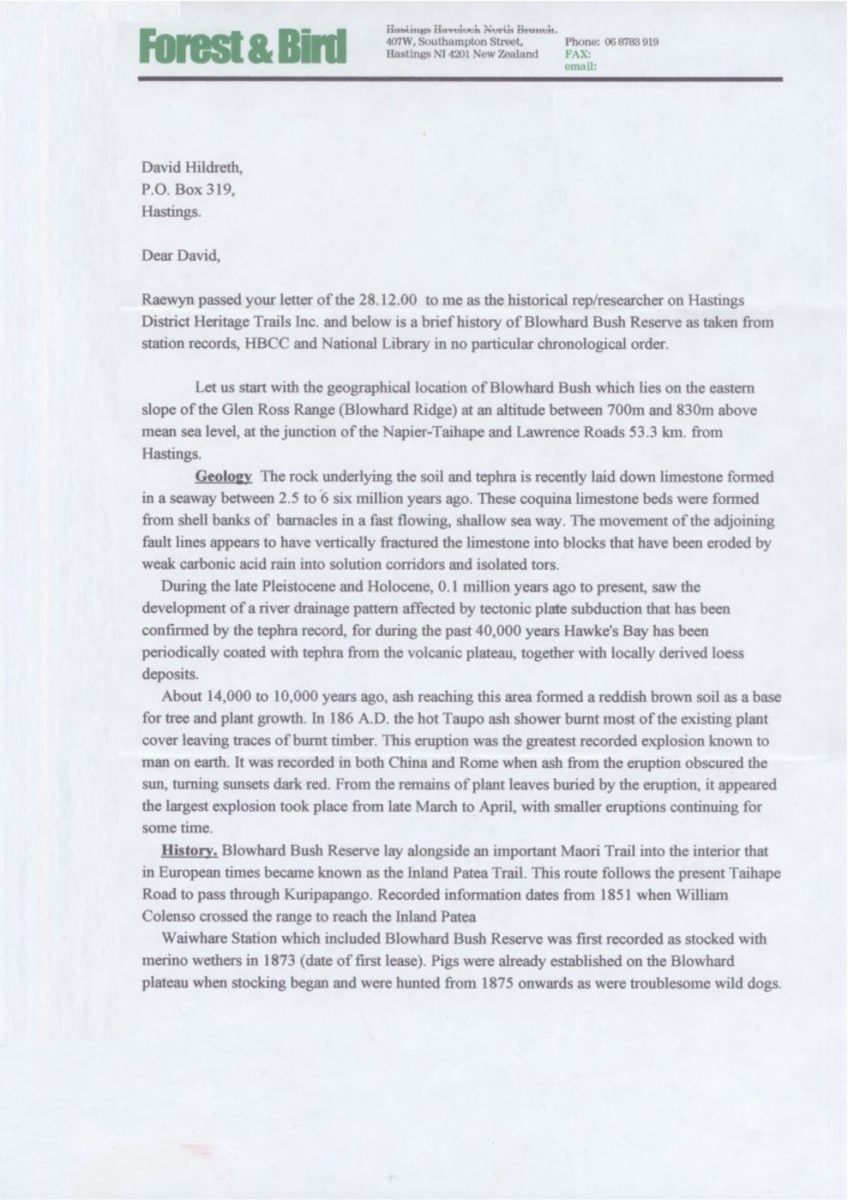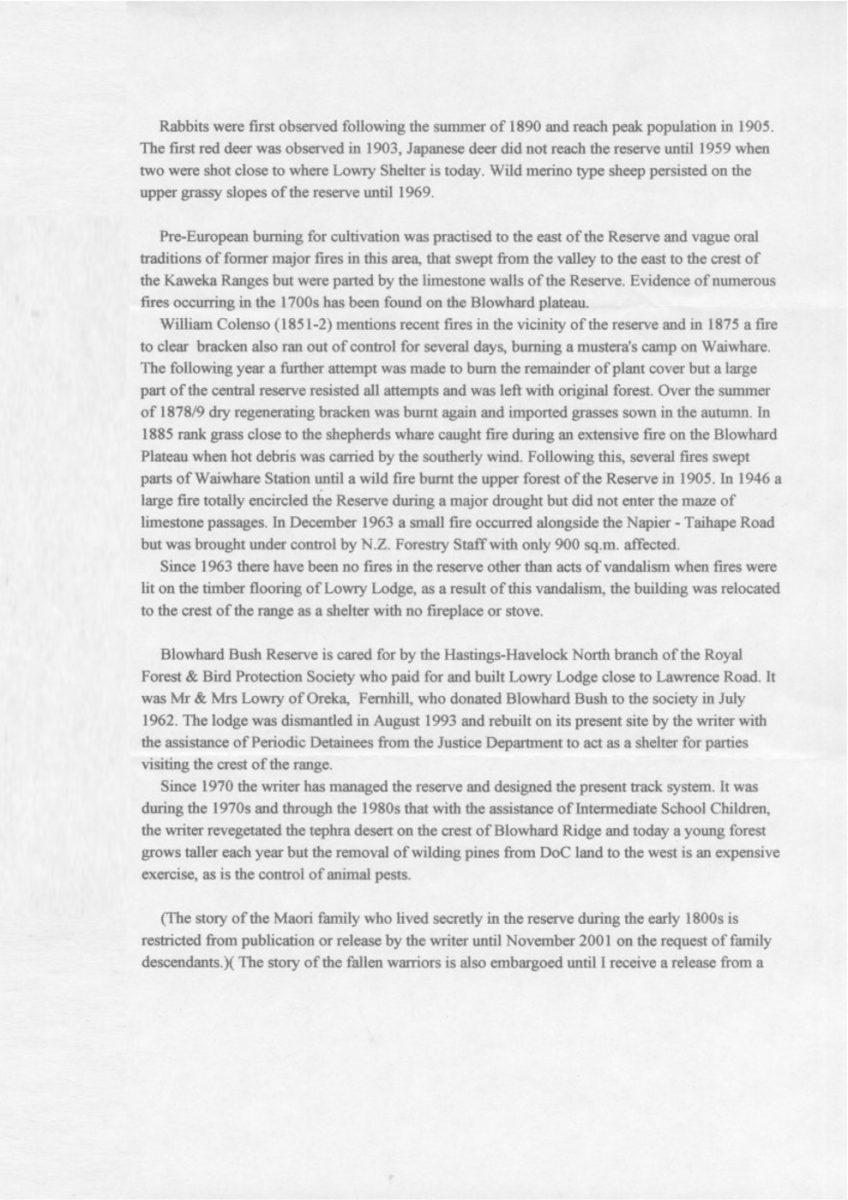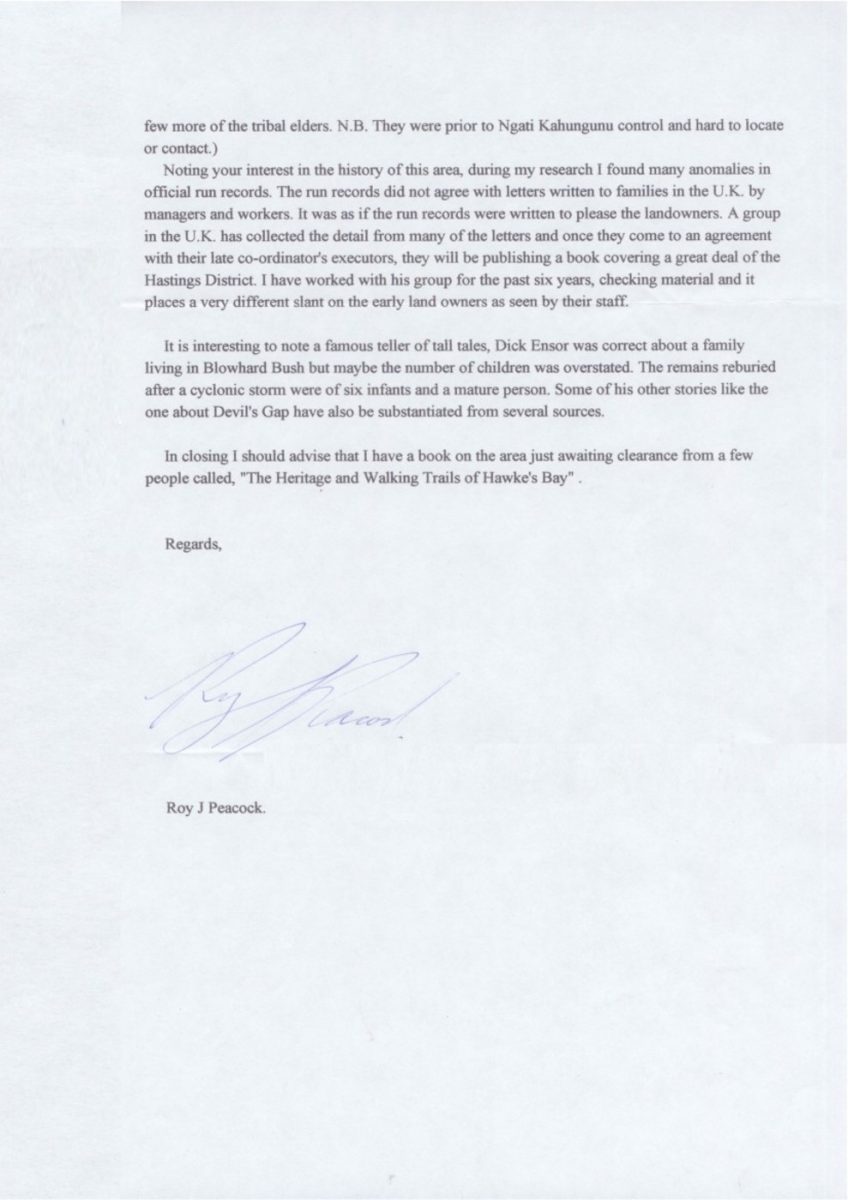Forest & Bird
Hastings Havelock North Branch,
407W, Southampton Street,
Hastings NI 4201 New Zealand
Phone: 06 8783919
FAX:
email:
David Hildreth,
P.O. Box 319,
Hastings.
Dear David,
Raewyn passed your letter of the 28.12.00 to me as the historical rep/researcher on Hastings District Heritage Trails Inc. and below is a brief history of Blowhard Bush Reserve as taken from station records, HBCC and National Library in no particular chronological order.
Let us start with the geographical location of Blowhard Bush which lies on the eastern slope of the Glen Ross Range (Blowhard Ridge) at an altitude between 700m and 830m above mean sea level, at the junction of the Napier-Taihape and Lawrence Roads 53.3 km. from Hastings.
Geology The rock underlying the soil and tephra is recently laid down limestone formed in a seaway between 2.5 to 6 six million years ago. These coquina limestone beds were formed from shell banks of barnacles in a fast flowing, shallow sea way. The movement of the adjoining fault lines appears to have vertically fractured the limestone into blocks that have been eroded by weak carbonic acid rain into solution corridors and isolated tors.
During the late Pleistocene and Holocene, 0.1 million years ago to present, saw the development of a river drainage pattern affected by tectonic plate subduction that has been confirmed by the tephra record, for during the past 40,000 years Hawke’s Bay has been periodically coated with tephra from the volcanic plateau, together with locally derived loess deposits.
About 14,000 to 10,000 years ago, ash reaching this area formed a reddish brown soil as a base for tree and plant growth. In 186 A.D. the hot Taupo ash shower burnt most of the existing plant cover leaving traces of burnt timber. This eruption was the greatest recorded explosion known to man on earth. It was recorded in both China and Rome when ash from the eruption obscured the sun, turning sunsets dark red. From the remains of plant leaves buried by the eruption, it appeared the largest explosion took place from late March to April, with smaller eruptions continuing for some time.
History. Blowhard Bush Reserve lay alongside an important Maori Trail into the interior that in European times became known as the Inland Patea Trail. This route follows the present Taihape Road to pass through Kuripapango. Recorded information dates from 1851 when William Colenso crossed the range to reach the Inland Patea
Waiwhare Station which included Blowhard Bush Reserve was first recorded as stocked with merino wethers in 1873 (date of first lease). Pigs were already established on the Blowhard plateau when stocking began and were hunted from 1875 onwards as were troublesome wild dogs.














Do you know something about this record?
Please note we cannot verify the accuracy of any information posted by the community.